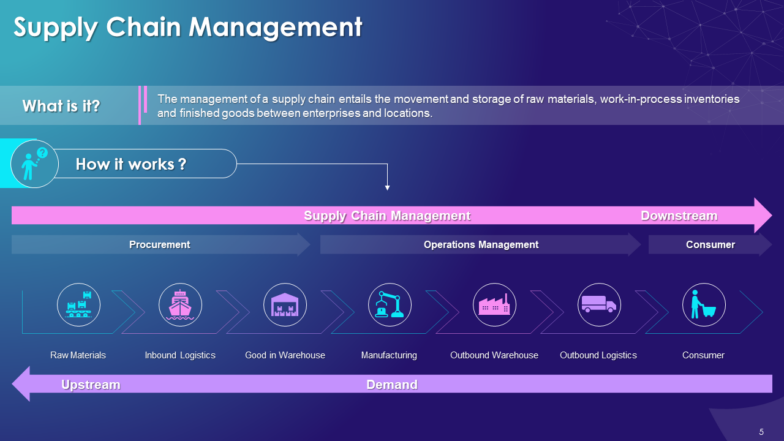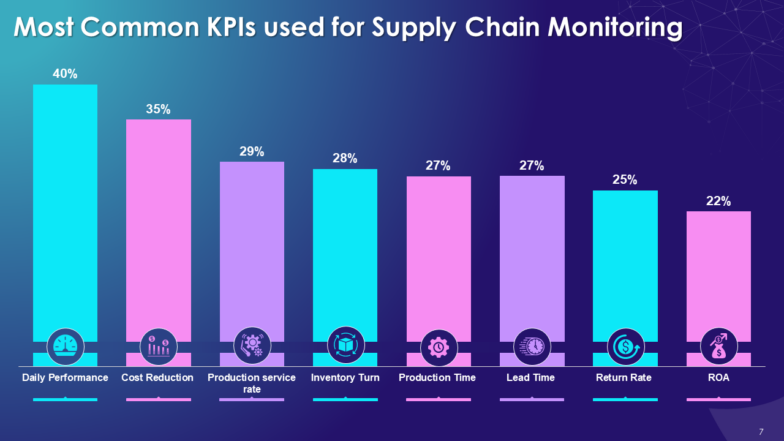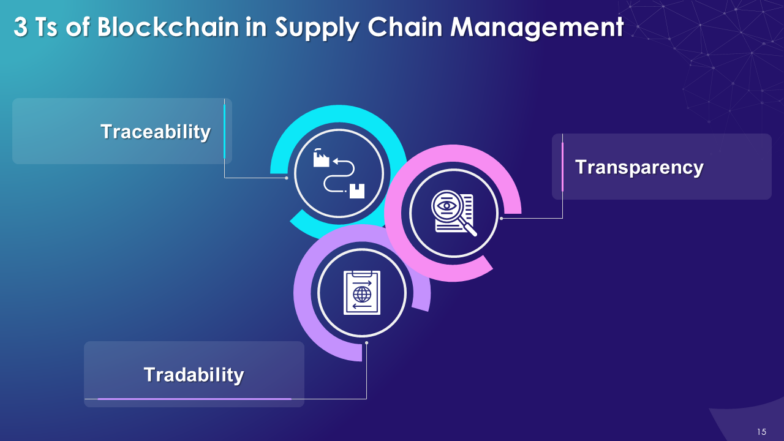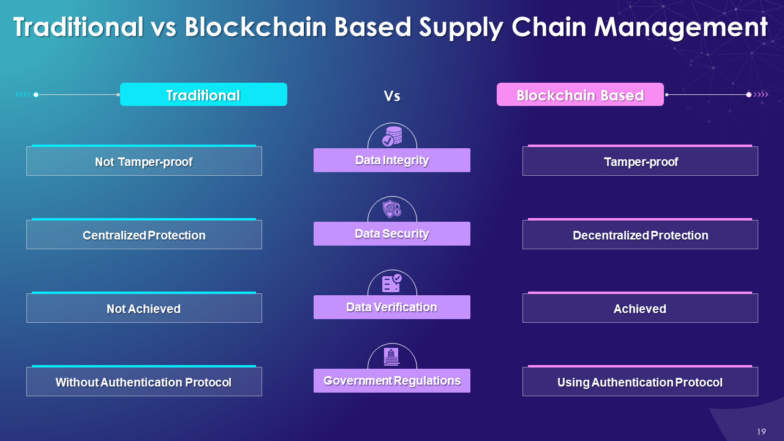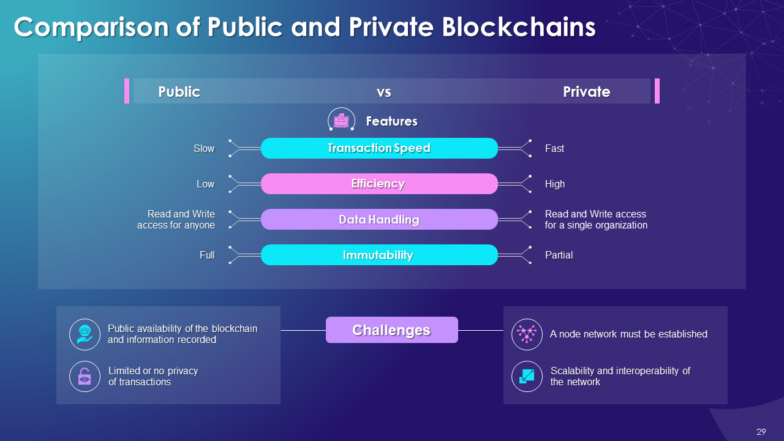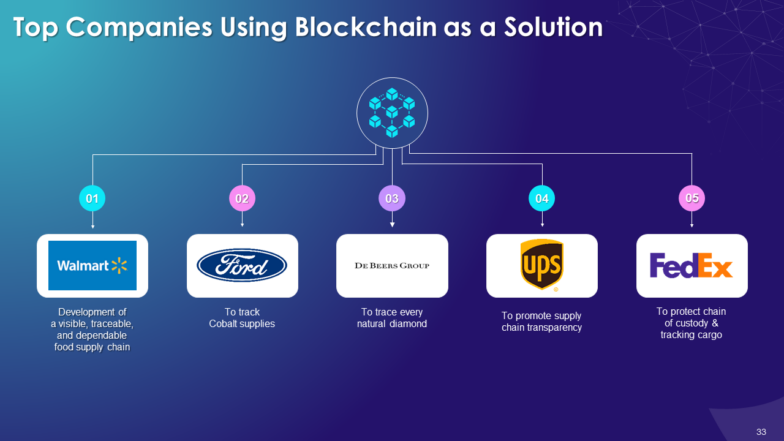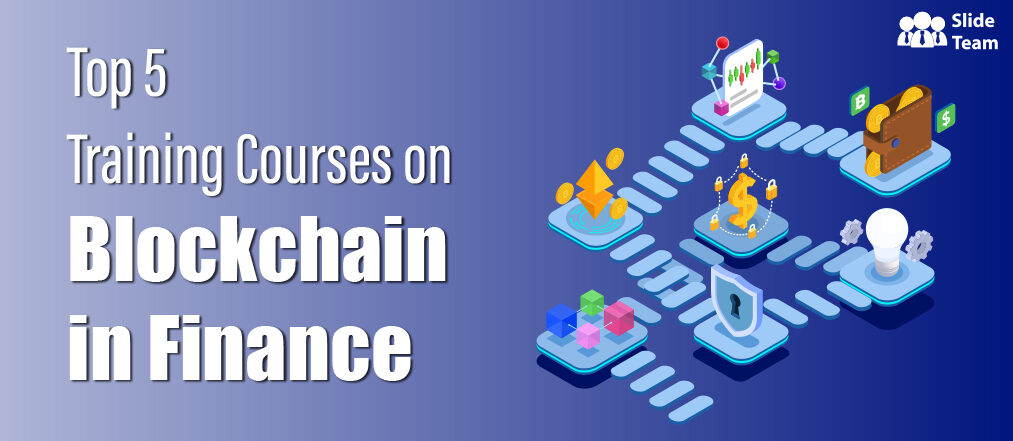The Covid-19 pandemic hit global supply chains, delaying packages of multi-billion-dollar corporations and humble beings like you and me as well. Then, a ship named Evergreen found itself stuck in the Suez Canal, and the wait for our beloved packages got longer, and longer. Could anything be worse? While netizens found solace by sending themselves memes of the little excavator trying to free the mammoth ship, companies lost a reported $6.7 million dollars per minute for six days and seven hours (as Lloyd’s, the global insurance marketplace, reported). It was hell. Perhaps Blockchain in Supply Chain Management could have saved us!
This is what an obstruction or delay in supply chains can do. Waiting weeks, if not months, for your Amazon shopping in an age, where same-day delivery is routine?
Where to, then, must we look for solace and a workable solution?
Supply chain enhancement through technology has been going on for decades but it is blockchain in supply chain management that has, and will, transform and elevate supply chain management.
Your audience may or not be aware but blockchain is already being integrated and wedded to the supply chain infrastructure. To educate, inform, and entertain your colleagues/team/ trainees of this concept, SlideTeam brings you our Comprehensive Training Deck on Blockchain Technology Applications in Supply Chain Management. Our Blockchain PPT Template Bundles offers the following benefits to your trainees/room of audience etc.:
- Increased Transparency and Traceability: Learning about blockchain in supply chain management can help companies create a more transparent and traceable supply chain.
- Improved Efficiency and Cost Saving: Blockchain technology can help streamline supply chain processes, reduce paperwork, and eliminate the need for intermediaries.
- Enhanced Security: Learning about blockchain in supply chain management can help companies improve the security of their supply chains. With blockchain, companies can create a tamper-proof record of all transactions, making it virtually impossible for anyone to alter or manipulate the data.
Trainers can download the complete deck here and present a visual showcase of transformation in the distribution business to people. We end the training with our standard format of:
- Key Takeaways
- Let’s Discuss
- Let’s Test What We Have Learnt
| SESSION NUMBER | TITLE |
|---|---|
| Session I | Supply Chain Introduction and Overview |
| Session II | Blockchain Technology (BT) Overview |
| Session III | Blockchain Technology in Supply Chain Management |
| Session IV | Use Cases and Case Studies of BT in SCM |
| Session V | Implementation of BT in SCM |
| Session VI | Top SCM Companies that are using blockchain |
| Session VII | Blockchain as a Service (BaaS) |
| Session VIII | Blockchain Implementation Roadmap for Supply Chain |
Session I: Supply Chain Introduction and Overview
The computer you are using to read this article and download our supply chain kpi PPT Templates or the phone you are looking at while the Deck downloads (if the speed is slow), are all possible due to well-managed and smoothly-delivered supply chains. In this premier session, you as the trainer and the de facto expert introduce and discuss Supply Chain Management (SCM), using our content-ready slides.
The trainees can also present what they already know to get the conversation going as we present our wares on the supply chain, its standard definition, working, development process, KPIs, statistics, and finally the challenges faced in traditional SCM.
Session II: Blockchain Technology (BT) Overview
With the mind still receding to the past with all the things that troubled traditional SCM not so long ago, we introduce the other half of this infrastructure, blockchain. We deliver information on what it is, how it works and its benefits. The language in the module is deliberately kept non-technical to ensure that a person with no technological background can understand the training slides.
Session III: Blockchain in Supply Chain Management
In this session, we get two plus two to make four and understand how blockchain is used for SCM.
We see the 3Ts of blockchain in SCM (Traceability, Transparency, and Tradability) and how blockchain impacts supply chains. We showcase how blockchain is used in this sector, and the significant benefits it provides, and also draw up a comparison chart between traditional and blockchain-based SCM.
As with all new technologies, we present the few limitations it has, such as standardization, permissioned blockchains, and a few more. But believe us, these irritants are just teething issues compared to the humungous potential the technology holds.
Session IV: Use Cases and Case Studies of Blockchain in Supply Chain Management
Theory is important to know and fun to learn but without understanding its practical applications, blockchain in SCM will always remain a curiosity and not the solution to your supply chain problems, which it is already proving to be.
In Session IV, we look at a use case and three case studies of BT in SCM. Each application is given at least one slide that presents the problem that the industry faced and the solution that blockchain provided. We discuss the use case in the food industry in all its vastness, from food production to waste recovery. We present case studies of the Louis Dreyfus Company in the Covantis blockchain platform, a timeline in the retail giant Walmart, and the issues the technology resolved with a charitable endeavor, the IBM Food Trust.
Session V: Implementation of Blockchain in Supply Chain Management
Before we go through the execution process, let us learn a bit more about blockchain types. We can classify blockchains as permissionless and permissioned, or public, hybrid, private, and consortium. We have a slide to help you decide, examine and decide which blockchain type suits your requirements and finally, we present the seven steps in BT that you must put in place for your SCM implementation process.
Some of the steps include educating yourself & stakeholders, recognizing use cases for blockchain, forming teams to manage & design solutions, etc.
Session VI: Top SCM Companies that are using blockchain
This is a single slide that showcases a few companies that are using blockchain as a solution to manage their supply chain. These include Walmart, Ford, De Beers Group, UPS, and FedEx. Each company has its use cases provided on the slide.
Session VII: Blockchain as a Service (BaaS)
We dedicate some time to understanding BaaS; what it is, the main takeaways, and its leading providers such as IBM, Microsoft, Amazon, etc.
Session VIII: Blockchain Implementation Roadmap for Supply Chain
The final session is a tabular representation of the roadmap to implement blockchain in supply chain. It showcases how the technology will be implemented in phases over a year in quarters, and the activities that accompany this execution.
The execution phases include platform selection, identification & setting goals, developing a PoC (proof of concept), etc. One also has to master activities like identifying use cases, rollout of the development plan, etc.
With a brief revision of the training, we finish it with some key takeaways and a small test to remember what was learnt. Finally, we open the floor to questions and discussions that the trainees are bound to have an answer to the complete satisfaction of everybody in the group.
So, explore our supply chain management ppt which is designed by professional researchers.
FAQs on Blockchain in Supply Chain Management
What is the function of SCM?
SCM, or Supply Chain Management, is the process of managing the flow of goods and services from the point of origin to the point of consumption. It ensures smooth and efficient movement of products, information, and finances within a supply chain network. SCM encompasses planning, sourcing, manufacturing, delivery, and returns management.
Effective SCM can help organizations optimize operations, reduce costs, improve customer satisfaction, and enhance their overall competitiveness in the marketplace. Key elements of SCM include inventory management, demand forecasting, logistics, and ensuring collaboration among supply chain partners.
What are the five basic steps of SCM?
The five basic steps of SCM are:
- Plan: This involves creating a strategy for the supply chain, setting performance goals, and identifying resources needed to achieve those goals.
- Source: This step involves identifying suppliers, negotiating contracts, and managing the procurement of goods and services.
- Make: This involves the actual production or creation of goods and services, as well as quality control and testing.
- Deliver: Here, businesses work to improve the logistics of getting products or services to customers, including transportation, warehousing, and distribution.
- Return: This step involves managing the reverse flow of goods and services, including returns, repairs, and recycling. Effective management of this step can help reduce costs and improve customer satisfaction.
What are the technologies within blockchain technology?
Blockchain ensures secure, transparent, and decentralized transactions. Some frequently used technologies in blockchain are:
- Cryptography: This is used to secure data by encrypting it, ensuring privacy and authenticity.
- Distributed systems: Used to ensure decentralization and redundancy of data across a network or a number of networks.
- Consensus algorithms: Used to validate transactions and ensure agreement between nodes in the network.
- Smart contracts: Self-executing contracts that automatically execute the terms of an agreement, after and when certain conditions are met.
- Peer-to-peer networking: Used to connect nodes on the blockchain network and facilitate communication and data exchange.
- Hashing: Used to ensure data integrity and immutability with the creation of a unique digital fingerprint of data.
What is blockchain and how it works?
Blockchain is a decentralized digital ledger that records transactions in a secure and immutable manner. Each block in the chain contains a cryptographic hash of the previous block, creating a secure and unalterable data chain. A network of users, known as nodes, validate the transactions, which are added to the blockchain through a consensus mechanism, such as proof-of-work or proof-of-stake. Once added to the blockchain, transaction data cannot be altered, providing a transparent and secure method of storing and transferring digital assets.


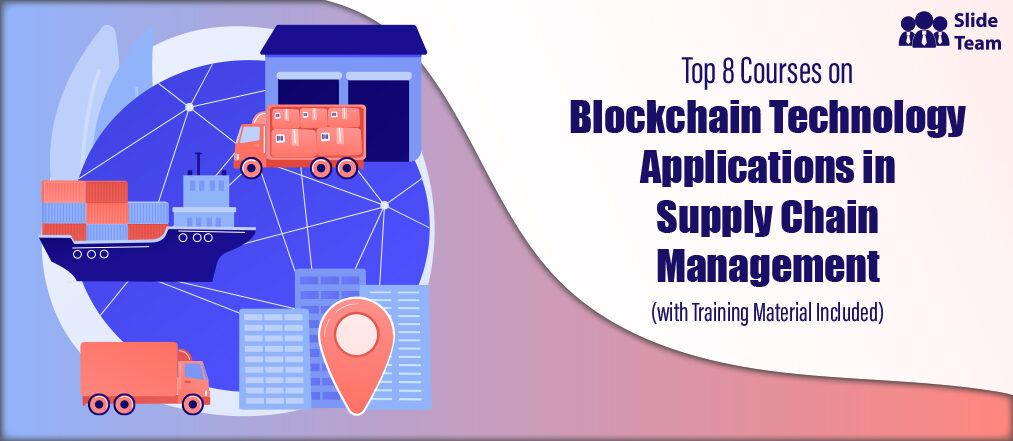


 Customer Reviews
Customer Reviews


